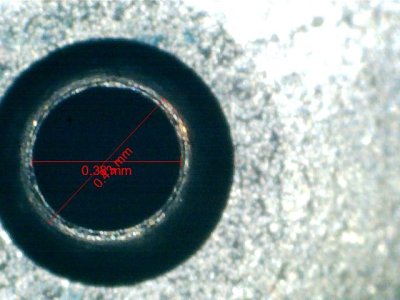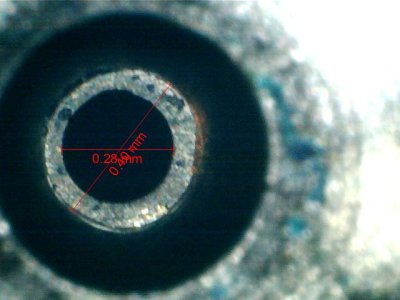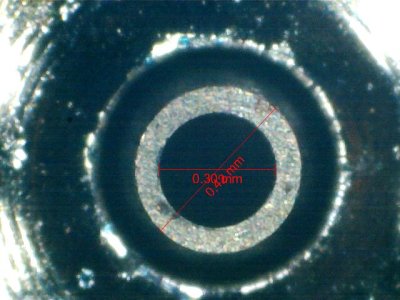K
kkx
Guest
Hi,
I was having problems with paint initiation, fine line, low psi atomization for my Olympos microns. They just can't match the two SPBs.
I have an MPA and MPB plus two SPB. So I have 4 micron heads (each of the MP have a spare head), 6 nozzles and 7 nozzle caps (one extra spare cap on top of what is in the heads and SPB). Have not used them for over 7 years. I might have swapped nozzle cap and nozzle between them. So I was trying to sort out what is what.
So things are a bit confusing and I wanted to sort things out.
I might have replaced nozzle with Iwata 0.23 to get an MPC like performance. The 7 nozzle caps vary in size (the diameter of the hole) and I am sure one of them is anIwataa nozzle cap for 0.23 (which I brought together with the 0.23 nozzle) and the rest should be original Olympos.
So I end up spending a lot of time matching the nozzle caps to nozzles to get good performance for all of them. Finally had that sorted this week.
Along the way, I have encountered a few interesting facts that I didn't know before and would like to verify with the knowledgeable people here.
1. The Iwata .23 nozzle will not work with the Olympos 0.18 needle. I forget if an MPC needle works (will test that tonight). But a 0.2 needle from H&S seems to work.
2. In the process, I took pictures of the nozzle and cap to help my effort. The size of the nozzle varies a lot.
3. I recently purchased a PS770 head and was surprised by the size of the nozzle. See the attached picture taken with a 400x USB microscope for comparison between the PS770 nozzle and the 0.18 nozzle on an SPB. The last photo is for the Iwata 0.23 nozzle (excuse the nozzle placement, it is not sitting dead center, I will need to adjust that later). I have only one or very few samples, so can't be conclusive. But it is interesting to see how big is the PS770 nozzle. BTW, it performs very well. Fine line and superb atomization. Could it due to the thin nozzle wall and a very small gap at the nozzle cap?
I was having problems with paint initiation, fine line, low psi atomization for my Olympos microns. They just can't match the two SPBs.
I have an MPA and MPB plus two SPB. So I have 4 micron heads (each of the MP have a spare head), 6 nozzles and 7 nozzle caps (one extra spare cap on top of what is in the heads and SPB). Have not used them for over 7 years. I might have swapped nozzle cap and nozzle between them. So I was trying to sort out what is what.
So things are a bit confusing and I wanted to sort things out.
I might have replaced nozzle with Iwata 0.23 to get an MPC like performance. The 7 nozzle caps vary in size (the diameter of the hole) and I am sure one of them is anIwataa nozzle cap for 0.23 (which I brought together with the 0.23 nozzle) and the rest should be original Olympos.
So I end up spending a lot of time matching the nozzle caps to nozzles to get good performance for all of them. Finally had that sorted this week.
Along the way, I have encountered a few interesting facts that I didn't know before and would like to verify with the knowledgeable people here.
1. The Iwata .23 nozzle will not work with the Olympos 0.18 needle. I forget if an MPC needle works (will test that tonight). But a 0.2 needle from H&S seems to work.
2. In the process, I took pictures of the nozzle and cap to help my effort. The size of the nozzle varies a lot.
3. I recently purchased a PS770 head and was surprised by the size of the nozzle. See the attached picture taken with a 400x USB microscope for comparison between the PS770 nozzle and the 0.18 nozzle on an SPB. The last photo is for the Iwata 0.23 nozzle (excuse the nozzle placement, it is not sitting dead center, I will need to adjust that later). I have only one or very few samples, so can't be conclusive. But it is interesting to see how big is the PS770 nozzle. BTW, it performs very well. Fine line and superb atomization. Could it due to the thin nozzle wall and a very small gap at the nozzle cap?
Attachments
Last edited by a moderator:






